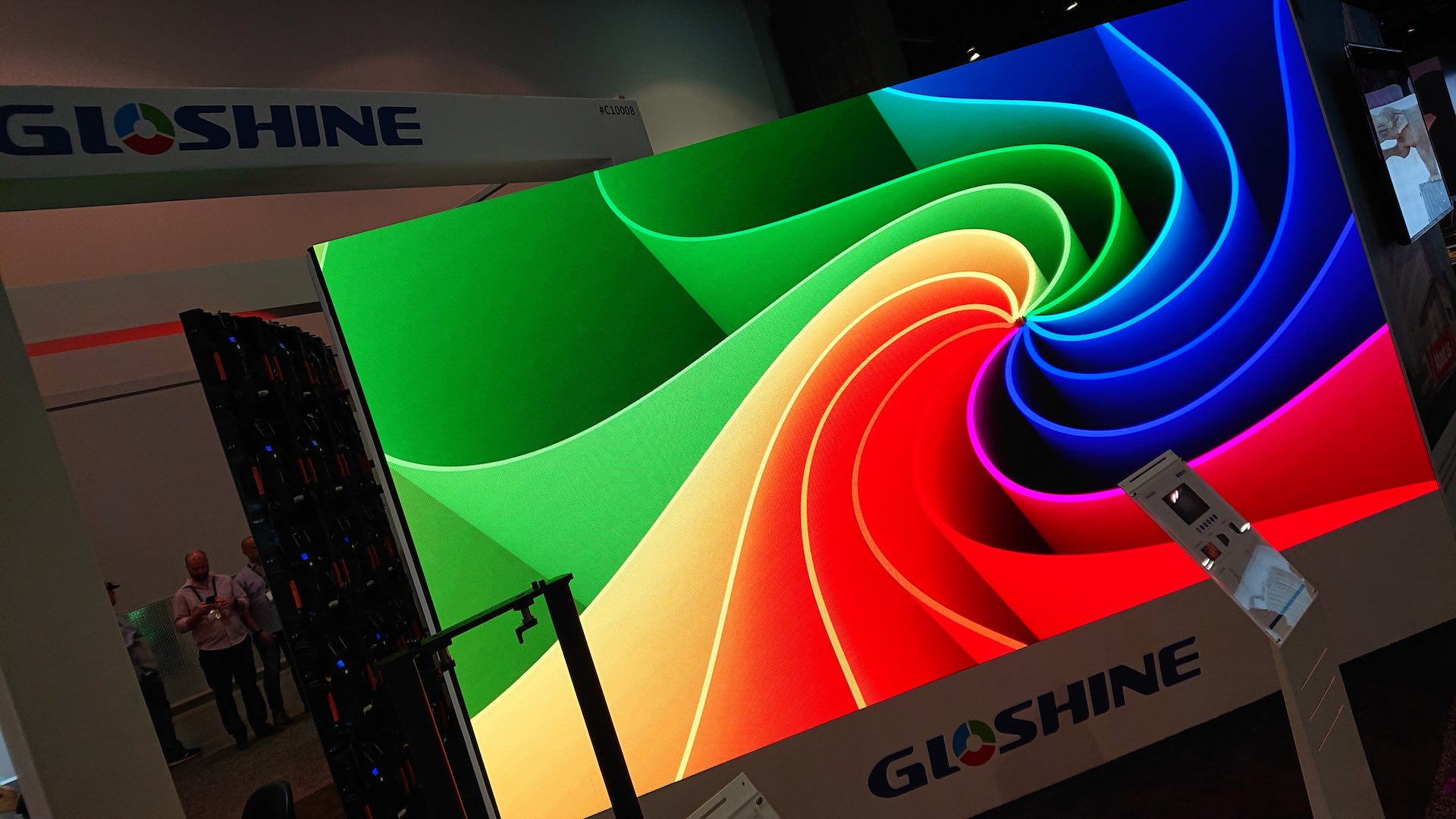
LED capture volumes are having a dramatic impact on the production industry, and brining new exhibitors onto the NAB show floor.
Exhibitors at the NAB Show 2022 seem to have brought with them enough LED video display panels to circle the earth in a glowing, blinking band of light and colour. It’s easy to get caught up in the hype, given the recent success of TV productions using the technique and the imposing effect of being confronted in person by a vast semicircular sweep of animating video that’s bigger than most cinema screens. It’s spectacular and it works really well.
Inevitably, behind all of this is a world of equipment racks, cables and even the occasional zip tie. Much of the information we’re about to discuss comes from processor manufacturer Brompton, whose devices are behind many of the best-known installations. The company finds itself a new exhibitor at the NAB Show this year precisely because of the sudden eruption of popularity of LED video walls as a film and television production tool.
Breaking the rules
Different companies do things differently, but the underlying technical realities of the subject are fairly universal. The fundamental truth is that LED panels tend to break a lot of the rules that film and television lighting manufacturers have taken care to follow as LED lighting in general has matured. One of the biggest broken rules is that they inevitably have to use pulse width modulation to control the brightness of each individual LED, something that’s generally avoided on general-purpose movie lights because it leads to flicker as the pulse width modulation drifts against the shutter timing on the camera.
It’s not quite always avoided, as some of the more advanced multi-zoned LED lights, particularly pixel tubes, do use carefully-controlled pulse width dimming. The only other option is to use programmable DC power supplies for every pixel, which is difficult on an LED pixel tube, and impossible on a video wall tile.
The speed at which the pulse width modulation works is a fundamentally performance-limiting parameter of any LED panel. There are only so many tiny windows of time in a second during which each LED may be on or off. Divide that down into many frames per second, and there are even fewer time windows per frame, especially given the sensor is only recording light half the time. On top of that, we might demand high frame rates, short shutter angles, or special tricks such as displaying images for several different cameras by alternating between them.
All of that divides down the amount of variability that’s available from the pulse width modulation, restricting the range of brightnesses each LED can achieve. So, frame rate, shutter angle and the required dynamic range - given we want to get as close as we can to clipping the camera with the video wall for convincing highlights - are interacting parameters.
Managing compromise
Managing this compromise is a large part of Brompton’s job as a processor manufacturer. The signal chain is relatively straightforward, at least conceptually. The processor receives an HDMI or SDI signal and splits it up into a series of Ethernet-based signals which each drive a series of panels, each of which is equipped with one of the company’s tiny decoder boards. These are built rather like SODIMM memory modules and slot into each of the panels just like memory into a laptop.
The work of splitting up the image into sections and sending the brightness data to the panels representing those sections is shared by both the processor and the decoder. The panels themselves, often made by a company such as ROE or Gloshine, can store their own calibration data, making replacements a reasonably reliable proposition that shouldn’t need too much manual tweaking - if any - to be an invisible repair.
Of course, none of this helps us to create the images to go on the wall in the first place, an issue which raises the spectre of motion tracking, rendering, and re-projection, not to mention the artistic endeavour of creating a convincing 3D realm in which to put our real-world objects. The result, as the likes of Vu, Arri and Brompton themselves have demonstrated, can be some of the brightest, sharpest (from a distance commensurate with the LED pitch) , punchiest images imaginable — and that is even just as a direct viewing experience, let alone as a visual effects tool.


Comments